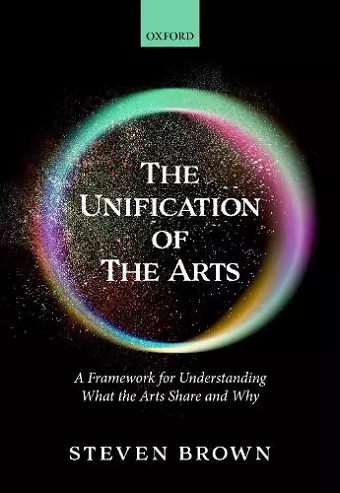The Unification of the Arts
A Framework for Understanding What the Arts Share and Why
Format:Hardback
Publisher:Oxford University Press
Published:25th Nov '21
Currently unavailable, and unfortunately no date known when it will be back

What are the arts? What functions do the arts serve in human life? There has been a surge of cognitive, biological, and evolutionary interest in the arts in recent years, most of it oriented towards individual artforms. However, there has been virtually no bridging work to integrate the arts under a single theoretical perspective. This book presents the first integrated cognitive account of the arts that unites visual art, theatre, literature, dance, and music into a single framework, with supporting discussions about creativity and aesthetics. Its comparative approach identifies both what is unique to each artform and what they share, shedding light on how the arts can combine with one another to form syntheses, such as choreographing dance movements to music, or setting lyrics to music to create a song. While studies in the psychology of the arts tend to focus on perceptual processes and aesthetic responses alone, this book offers a holistic sensorimotor account that examines the full gamut of processes from creation to perception. This allows for a broad discussion of the evolution of the arts, including the origins of rhythm, the co-evolution of music and language, the evolution of drawing, and cultural evolution of the arts. Finally, the book unifies a number of topics that have not previously been fully related to one another, including theatre and literature, music and language, creativity and aesthetics, dancing and acting, and visual art and music. A unique volume providing a bold new approach to the integration of the arts, for academics or general readers of the arts, psychology, cognitive neuroscience, anthropology, and evolutionary studies.
The Unification of the Arts is a major contribution to our understanding of the origin and nature of the arts. Brown's argument is tremendously insightful and tenaciously consistent, though some readers may disagree with some of his core assumptions or assertions, such as a direct adaptive value of the arts, the possibility of group selection, the overwhelming importance of cultural influences, and a downplaying of individual-level competition and achievement in the arts. * Aaron Kozbelt, Evolutionary Studies in Imaginative Culture *
The Unification of the Arts demarcates a valuable perspective on some of the most meaningful and rewarding aspects of human experience, and I am keen to see how it will shape our ongoing understanding of them. * Evolutionary Studies in Imaginative Culture *
The Unification of the Arts is a major contribution to our understanding of the origin and nature of the arts. Brown's argument is tremendously insightful and tenaciously consistent. * Evolutionary Studies in Imaginative Culture *
The major strength of this book, however, is the broadening of scope and also its interdisciplinary approach...This is quite refreshing. Besides, the book also provides a lot of historical and philosophical digressions, such as Plato's distinction between modes of storytelling that are acted out (mimesis) or narrated (diegesis), Aristotle's concept of imitation and catharsis, Diderotâs definition of acting theory, Baumgarten's view on aesthetics, Rameauâs harmonicity theory on the origins of scales, and Rousseau's conception of the joint origin of music and language. The multiple illuminating figures and tables with classification schemes are also quite refreshing and inspiring. * Mark Reybrouck, Journal of Medical Humanities *
The Unification of the Arts is a thought-provoking study that will be a welcome challenge to many readers more familiar with traditional debates on art and aesthetics. * Leonardo Reviews *
It is one thing to study different art forms from a cognitive perspective: it is another to bring together these different lines of research into a unified conceptual framework. This is what Brown aims to do in his ambitious and important book The unification of the arts: A framework for understanding what the arts share and why....Brown has done what few modern cognitive scientists are equipped to do, because most of us specialize in one specific domain (e.g., music psychology) by choice or necessity...Brown's book deserves a wide audi- ence among researchers in cognitive science, the arts, and philosophy, and will be a valuable resource for scholars and students for many years to come. * Aniruddh D. Patel, Musicae Scientiae *
ISBN: 9780198864875
Dimensions: 254mm x 177mm x 27mm
Weight: 934g
400 pages